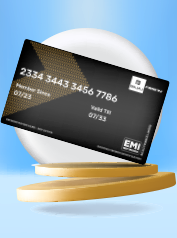
Taxis are a lifeline for daily commuters residing in metropolitan cities. Whether yellow-and-black Premier Padmini in Mumbai or yellow Ambassadors in Kolkata, or Radio taxis, like Ola, Uber, etc., they all provide essential transportation services.
However, the main impact of the Goods and Services Tax (GST) regime is on the radio taxis that you book using a mobile application.
To delve deeper to understand what these radio taxis are and how the GST on cab services is impacting the industry and commuters, read on.
Before the introduction of the new indirect taxation regime in 2017, service tax, with a 60% abatement, was applicable on the following:
A contact carriage
A radio taxi
A bus
Note that the effective service tax was 6%, which was applicable on radio taxis and AC buses but not metered taxis.
The GST on taxi services will only impact radio taxis, as was the case with service tax. The metered taxis and auto-rickshaws (including Ola and Uber Autos) have been placed outside of the GST regime.
In place of a 6% service tax, a 5% GST rate on cab services (without ITC) is now applicable. Check the following table to see how GST has impacted the cost of your travel through these radio taxis:
Description |
Pre-GST Rate |
Post-GST Rate |
|---|---|---|
Basic Fare |
₹200 |
₹200 |
Access Fare |
₹29 |
₹29 |
Total Fare |
₹229 |
₹229 |
Service Tax@6% |
₹13.74 |
- |
GST@5% |
- |
₹11.45 |
Final Fare |
₹242.74 |
₹240.45 |
So, the fares that you have to pay for the radio taxi services have come down after the implementation of GST on cab services.
The pre-GST indirect tax regime had a partial reverse charge mechanism (RCM). Here, the service provider and receiver were liable to pay 50% each in case the service provider was not availing abatement. If that is not the case, the recipient has to pay 100% of the tax.
In 2019, the GST Council decided to bring the renting of radio taxis under the RCM of the GST. So, generally, the supplier of a service pays tax on the supply. However, the RCM mandates that the body corporate (or the recipient of service) is liable to pay tax.
When you book a taxi, cab service corporations like Ola and Uber connect you with their drivers. Here, drivers are providing services to the corporation. So, Ola, Uber, etc., are considered recipients of services, whereas drivers are service providers.
These corporations provide them with a share of the total fare for their services. For instance, the corporation pays the driver ₹200 as a share of the fare and ₹10 to the government as GST on Ola rides.
The company charges GST on the fare for providing services to passengers. As the company pays the GST for taxi services based on the reverse charge mechanism, they can claim input tax credit.
Here’s how they adjust it with their output tax liability.
By availing ITC on GST on cab services, the claimant can avoid cascading of taxes. Here is how it works:
1. For Service Providers
The Central Board of Indirect Taxes and Customs (CBIC) allows the service providers to choose between these two options:
Option 1: Pay 5% GST and Not Claim ITC The service providers can choose to pay the taxi service GST rate of 5% as output cost and not claim ITC.
2. For Service Receivers
The service receivers cannot claim ITC on availing taxi services, as it is disallowed under Section 17 (5) of the CGST Act. For example, if you book a cab to travel in your city, you are not liable to claim input tax credit.
Before the various GST Acts were enacted, leased cars were charged a 14% Value Added Tax (VAT) along with a 15% Service Tax. However, under the current GST regime, a mid-sized sedan on lease is taxed at a GST rate of 28% with an additional 15% cess charges.
According to the Lease Plan Ltd., the charges that drivers have to pay for vehicles on lease under the GST are:
Vehicle Cost (Ex-showroom) |
Vehicle Description |
Monthly Lease Rental (VAT@14%, Service Tax@15%) |
GST Rate + Cess |
Monthly Lease Rental (Post-GST) |
Difference in Monthly Lease Rental |
|---|---|---|---|---|---|
₹7,51,000 |
>4m, Petrol 1373 cc |
₹18,970 |
28% + 15% |
₹23,690 |
₹4,720 |
₹8,09,400 |
<4m, Diesel 1396 cc |
₹15,940 |
28% + 3% |
₹18,240 |
₹2,300 |
₹8,35,600 |
<4m, Petrol 1199 cc |
₹21,880 |
28% + 1% |
₹24,650 |
₹2,770 |
The implementation of the GST has benefitted the passengers as the fares have come down as compared to the pre-GST regime. However, drivers and cab aggregators have to pay higher monthly lease rentals on cars.
So, the government could rejig the taxi service GST rate on the lease, which would benefit the drivers and cab service provider companies.
The GST on cab services is 5%. However, service receivers can also choose to pay 12% GST to avail ITC.
Yes, the GST is applicable on the taxi hire charges as well as the access fees.
If drivers take a car on a lease, they need to pay GST on the monthly lease rental of the car.
The cab aggregators pay the GST on transport charges. However, after the ride, they charge the tax on your fare.
Section 9(5) of CGST Act mandates that cab aggregators like Ola and Uber have to pay for GST on cab services. So, drivers do not need to have an Uber or Ola cab GST number.
Only service providers, i.e., Ola and Uber, can claim ITC by adjusting it with output tax liability if they pay 12% taxi GST.
Academy by Bajaj Markets












